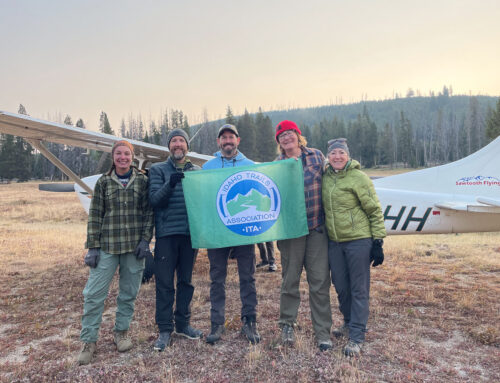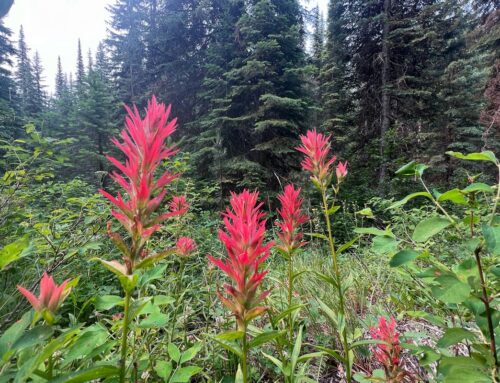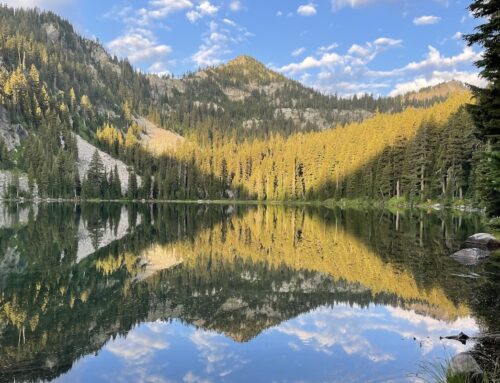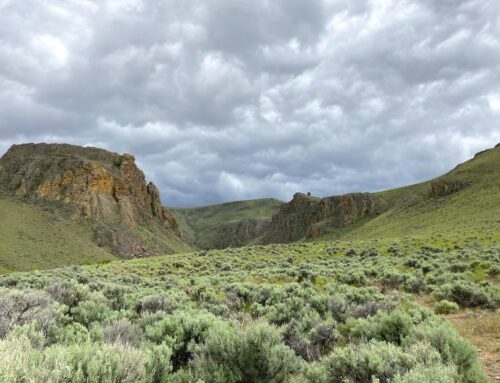Our Trail Spotlight highlights day trips to multi-day hikes across Idaho. Trail conditions can change quickly- swollen rivers can become impassable, windstorms can knock trees down across trails, and snow can come earlier than expected. Please take these recommendations as a jumping off place and do additional research to understand current conditions and keep yourself safe if you choose to hike this trail. Physical guidebooks and maps are always good to have or check out some online resources like Alltrails.com for updated trail reports. If your trip is as awesome as you hope it will be, please share photos and feedback!
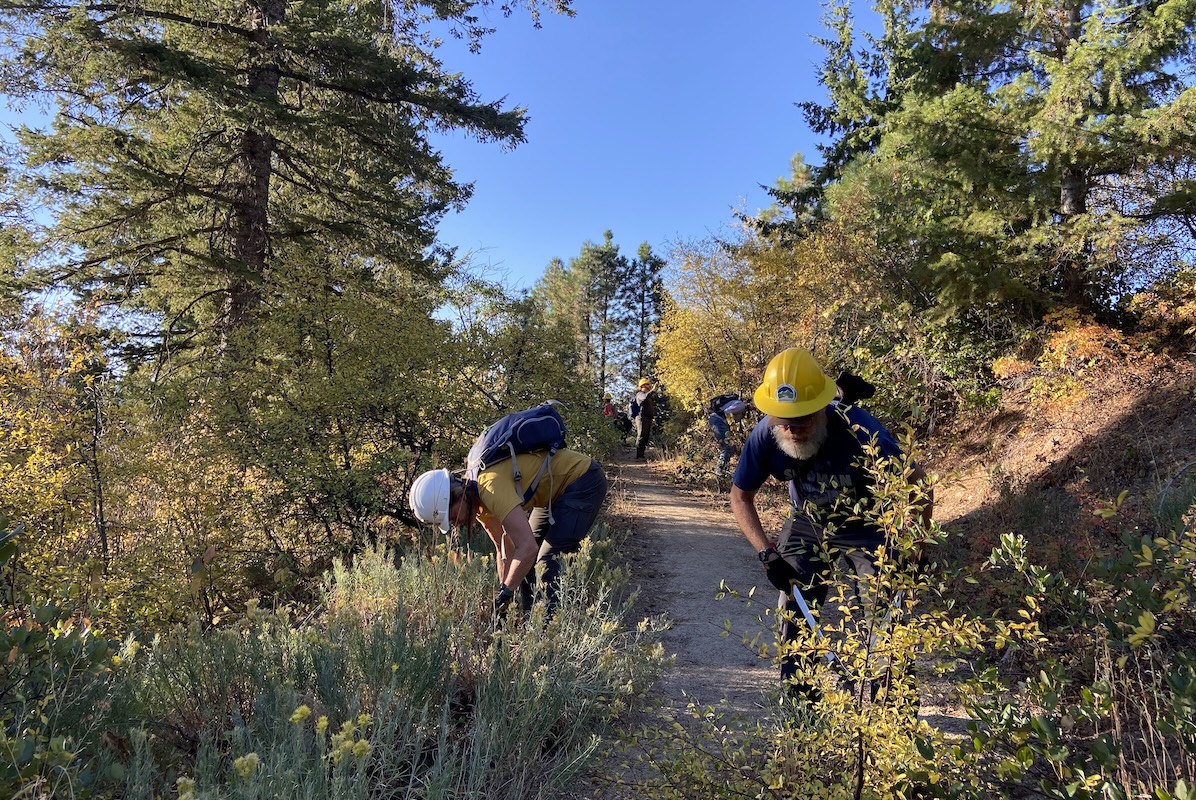
Trail: Upper Dry Creek, Shingle Creek Loop
Recommended by: Liz Bridges, ITA Advisory Board
Duration: Day Hike
Area: Boise National Forest
Difficulty Rating: 3- the trail steepens as it approaches the Boise Front Ridge Road. Sandy trail conditions can make the trail slippery. Good footwear is recommended if doing the full length of the trail and if adding the Shingle Creek loop.
Road Considerations: The Bogus Basin Road is excellent. Parking is available on the side of the road in two locations.
Total hiking miles: 7.62 miles to the Ridge Road/13.8 mile loop
The Hike: The Dry Creek trail, marked as #78 in the Ridge to Rivers system, is a favorite of Idaho Trails Association. An ITA crew last worked this trail during the 2024 National Public Lands Day in late September and it’s in great shape! Dry Creek is one of the few trails in the Boise Front that has water in the creek year round. It is, therefore, an excellent hike for well-behaved dogs, providing shaded sections and good footing the length of the trail. Dry Creek is one of the longest drainages of the Boise Foothills, therefore bringing water and clothing layers is advised. The hike rises from desert riparian habitat up into pine and fir forests, with several creek crossings. The addition of bridges makes this trail an easy hike, increasing in steepness only as you reach the upper end of the trail and approach the Boise Front Ridge Road. Home to numerous beavers, myriad birds, including the brilliant indigo bunting, and redband trout, an extremely rare and hardy desert fish, the Dry Creek trail is a perfect spring and fall hike, and an early morning summer hike. Dry Creek and Shingle Creek merge at a shaded pool. This is either a perfect turn around spot, or the place to choose to follow Dry Creek to the west or Shingle Creek to the east. The Dry Creek option provides a longer and somewhat gentler ascent. Initially the Dry Creek trail rolls, ever upward, along the creek, passing through sloping sagebrush and bitterbrush meadows. After the first bridge after the creek junction the trail leaves the desert riparian ecosystem and enters pine and fir forests. The trail becomes noticeably cooler at this point, so it is advisable to bring layers, especially if hiking in the spring or fall. The last climb to the junction with the Shingle Creek trail is steep and the sand gives way to crumbled granite. The high point of the trail is along the Boise Front Ridge Road. It is possible to shortcut this section by descending along the steeper Shingle Creek trail. The ascent to the Ridge Road along Shingle Creek is steeper and shorter, and traverses sections of forest and a last exposed hillside of ceanothus and wild peonies, among other Boise Front flowers.
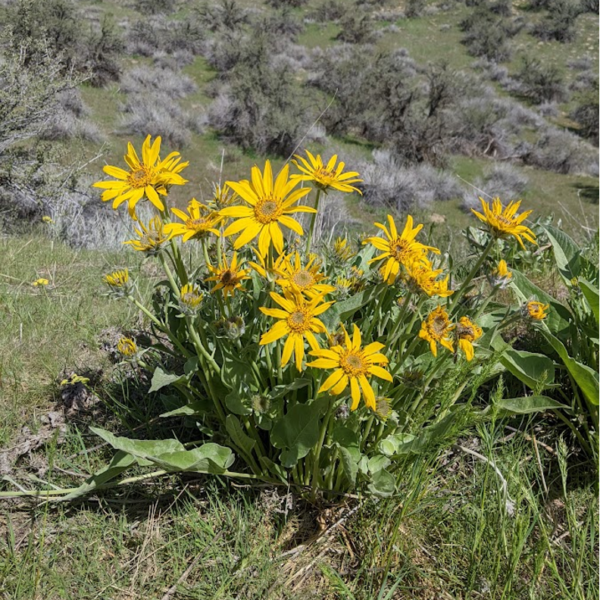
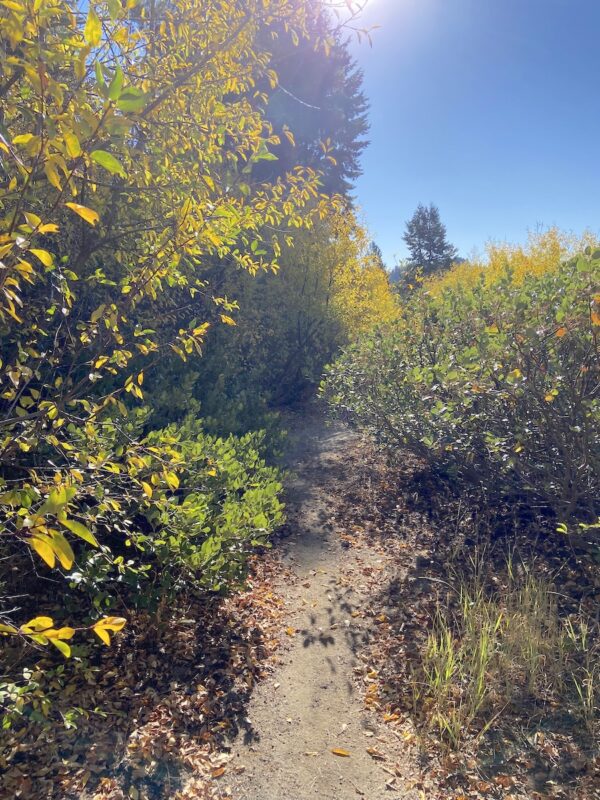
Things to consider: Large flocks of sheep are trailed across Dry Creek and Shingle Creek to the higher lands in the spring. If you hear, smell or see sheep, place your dog on a leash and remain attentive for the herding dogs. As temperatures warm, rattlesnakes emerge and can be found alongside and on the trail. Snake Avoidance classes, lasting a brief hour, are offered in Boise in the spring by Idaho Fish and Game and other groups and are an excellent way to protect your dog from inadvertent snake encounters. Poison ivy can be found in patches along the creek but, if identified, can be easily avoided.
Fun places to visit on your way in or out: Remains of an old stone cabin and farming and mining equipment can be found along the trail, giving a glimpse of life in the foothills in the late 1800’s.
More info about this hike: More information and a profile of the trail can be found through AllTrails.

